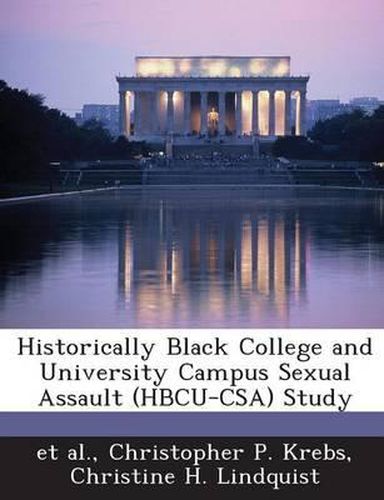Readings Newsletter
Become a Readings Member to make your shopping experience even easier.
Sign in or sign up for free!
You’re not far away from qualifying for FREE standard shipping within Australia
You’ve qualified for FREE standard shipping within Australia
The cart is loading…






Of the 3,951 women involved in the study, 14.9 percent reported an attempted or completed sexual assault before entering college, and 14.2 percent reported experiencing an attempted or completed sexual assault since entering college. The prevalence of sexual assaults that occurred when the victim was incapacitated was higher since entering college (6.2 percent) than before entering college. Different victim factors were associated with specific types of sexual assault (forced or incapacitated). Descriptive analyses of the context, consequences, and reporting of sexual assault also suggest differences between victims of forced sexual assault and sexual assault while incapacitated. The most common university practices and policies that improve responses to sexual assault incidents were having an official sexual assault protocol; campus police regularly referring sexual assault victims to university victim’s, health, or crisis centers; campus law enforcement maintaining a daily crime log available to the public; and campus police providing annual records of reported crime to the institution for the annual security report. The current study advises that universities must address the dangers of alcohol use as a risk factor for sexual assault. The study involved a Web-based survey of undergraduate women at four historically Black colleges or universities, which varied in size, geography, and type (public or private). The survey was administered in the fall of 2008 and involved 3,951 undergraduate women.
$9.00 standard shipping within Australia
FREE standard shipping within Australia for orders over $100.00
Express & International shipping calculated at checkout
Of the 3,951 women involved in the study, 14.9 percent reported an attempted or completed sexual assault before entering college, and 14.2 percent reported experiencing an attempted or completed sexual assault since entering college. The prevalence of sexual assaults that occurred when the victim was incapacitated was higher since entering college (6.2 percent) than before entering college. Different victim factors were associated with specific types of sexual assault (forced or incapacitated). Descriptive analyses of the context, consequences, and reporting of sexual assault also suggest differences between victims of forced sexual assault and sexual assault while incapacitated. The most common university practices and policies that improve responses to sexual assault incidents were having an official sexual assault protocol; campus police regularly referring sexual assault victims to university victim’s, health, or crisis centers; campus law enforcement maintaining a daily crime log available to the public; and campus police providing annual records of reported crime to the institution for the annual security report. The current study advises that universities must address the dangers of alcohol use as a risk factor for sexual assault. The study involved a Web-based survey of undergraduate women at four historically Black colleges or universities, which varied in size, geography, and type (public or private). The survey was administered in the fall of 2008 and involved 3,951 undergraduate women.